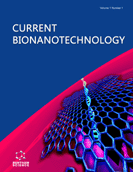Abstract
Background: The present study deals with new microwave assisted green, costeffectiveness, synthesis of metal nanoparticles using aqueous leaf extracts. The plant extracts with metal precursors were used to made eco-friendly/ biodegradable metal nanoparticles through conventional and microwave irradiated methods. The iron and silver nanoparticles are one of them.
Methods: Synthesized AgNPs and FeNPs were primarily characterized by UV-Vis spectrophotometer and further evaluated with FTIR and Atomic Force Microscopy (AFM) techniques. AgNPs and FeNPs were studied for antimicrobial activity against various human pathogenic microorganisms E. coli, V. cholerae (Non-0319), Shigella flexneri (16), Klebsiella pneumoniae (BCH-271), V. Cholerae (Non-0319-CSK 6669), S. pneumoniae, S. aureus, Shigella dysenteriae using disc diffusion methods.
Results: The synthesized silver nanoparticles using aqueous leaf extracts of P. guajava and Camellia sinensis showed maximum absorption peak at 420nm and 421nm respectively and iron nanoparticles synthesized using aqueous leaf extracts of Mangifera indica showed maximum absorption peak at 315nm. The AFM images of sample revealed the presence of metal nanoparticles and particle size was found as 42nm, synthesized under microwave in presence of plant extracts (P.guajava). 16nm and 52nm sized nanoparticles were synthesized under conventional methods using aqueous leaf extract of Camellia sinensis and Mangifera indica. Silver nanoparticles synthesized using aqueous leaf extracts of Camellia sinensis showed antibacterial activity against various pathogenic microorganisms E. coli (9mm), V. cholerae (Non-0319) (8mm), Shigella flexneri (16) (8mm), Klebsiella pneumoniae (BCH-271) (10mm), V. Cholerae (Non-0319- CSK 6669) (9mm), S. pneumoniae (6mm), S. aureus (No), Shigella dysenteriae (No). Silver nanoparticles and iron nanoparticles synthesized using aqueous leaf extract of P. guajava and Magnifera indica did not show any zone of inhibition against various pathogenic microorganisms.
Conclusion: Aqueous leaf extracts are useful for the preparation of metal nanoparticles under microwave irradiation and conventional methods through green processes. The silver nanoparticles synthesized using aqueous leaf extract of Camellia sinensis showed antibacterial activity against various human pathogenic microorganisms.
Keywords: Aqueous herbal leaf extract, Microwave, Metal nanoparticles, AFM, Antimicrobial activity.
Graphical Abstract
 17
17

